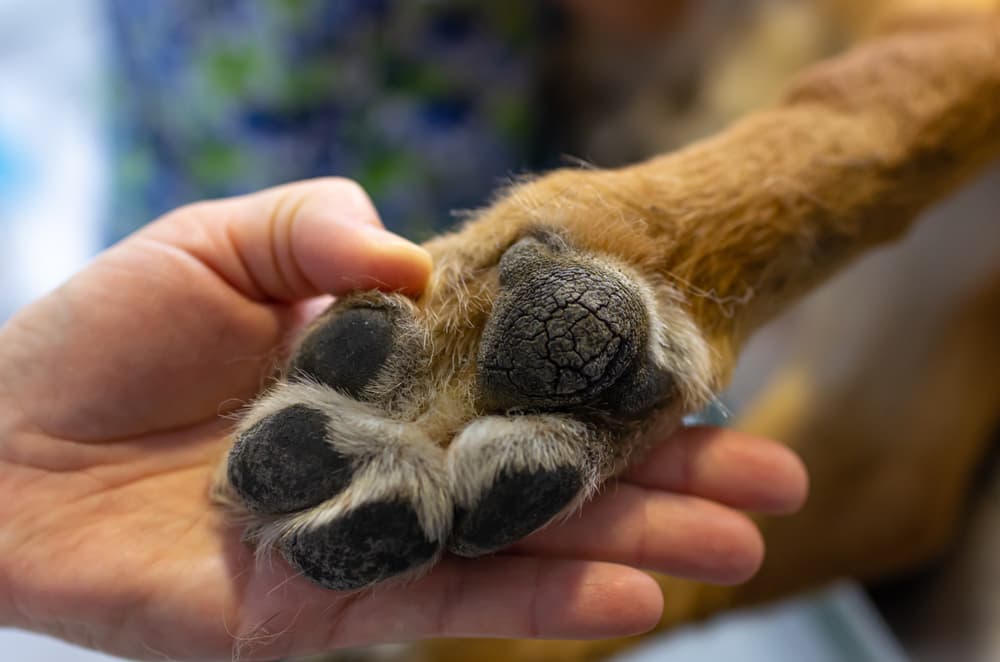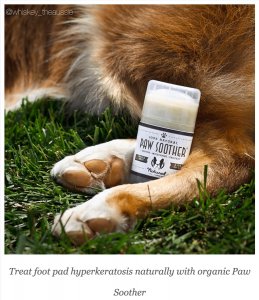

Propylene glycol is a lipid solvent and removes fats from the skin. However, it is thick, greasy, and can easily stain carpet and furniture around the house if not allowed to dry after application. It has lubricating and coating properties that can help increase water retainment to the skin. Petrolatum can be found easily by owners over-the-counter. A successful topical product used in cases of hyperkeratosis (especially nasal hyperkeratosis and calluses) includes 6.6% salicylic acid and 5% urea. Using urea in a topical formulation allows the product to feel less greasy which is preferable to owners.
#Nasodigital hyperkeratosis dog paw skin
Urea is also a keratolytic that moisturizes the skin by softening keratin and promoting desquamation which normalizes the epidermis. It helps to increase the moisture of the skin while allowing keratinocytes to shed easier. Salicylic acid is a keratolytic that causes desquamation of the stratum corneum without affecting the structure of the epidermis. These can include ingredients such as salicylic acid, urea, petrolatum, and propylene glycol. Topical treatments are typically recommended to provide hydration to the affected area. Like many other dermatologic conditions, the disease is managed long-term. The formation of abnormal keratin cannot be prevented in canine hyperkeratosis. Histopathology rules out other important differential diagnoses such as pemphigus foliaceus, discoid lupus erythematosus, drug reaction, etc.

Histopathology findings include epidermal hyperplasia and marked parakeratotic or orthokeratotic hyperkeratosis.

This is due to abnormal facial architecture that does not allow the dorsal portion of the nasal planum to rub frictionally on common surfaces such as food dishes.ĭiagnosis of hyperkeratosis may be made clinically or require a biopsy depending on the clinical presentation. A classic example of acquired hyperkeratosis is an elbow callus in a mature, large breed dog.Īnother common form is nasal hyperkeratosis which can be seen in any breed, but especially boxers, Boston terriers, and English bulldogs. Acquired hyperkeratosis is seen more often. Conditions of hyperkeratosis can be split into congenital and acquired. If this epidermal turnover rate is altered, then epidermal thickness changes abnormally. Typically, a dog’s epidermal turnover time is 22 days. Related: Get our Hot Topics in Dermatology GUIDE If hyperkeratosis becomes more pronounced, it can lead to secondary infections and cracking of the skin. This can happen on the skin (especially pressure points such as elbows), paw pads, and nasal planum. Hyperkeratosis is a condition where excess keratin (structural protein of the skin) is produced causing the skin to thicken or harden.


 0 kommentar(er)
0 kommentar(er)
